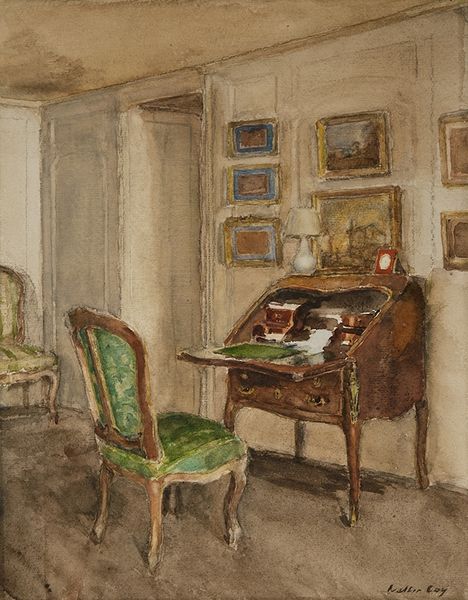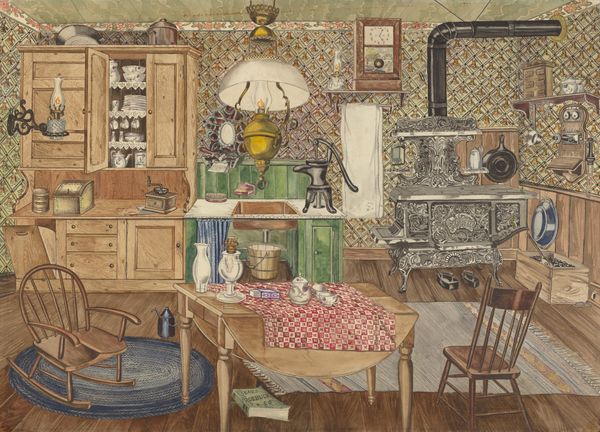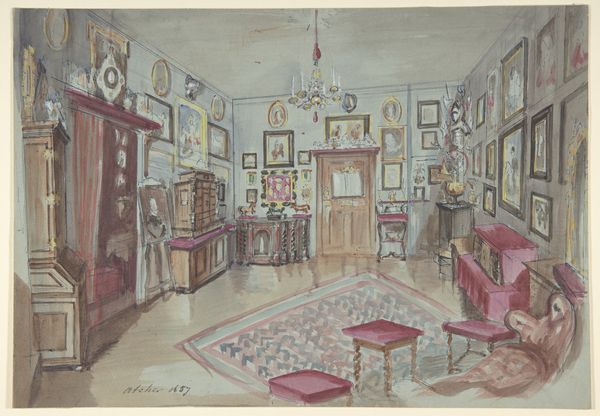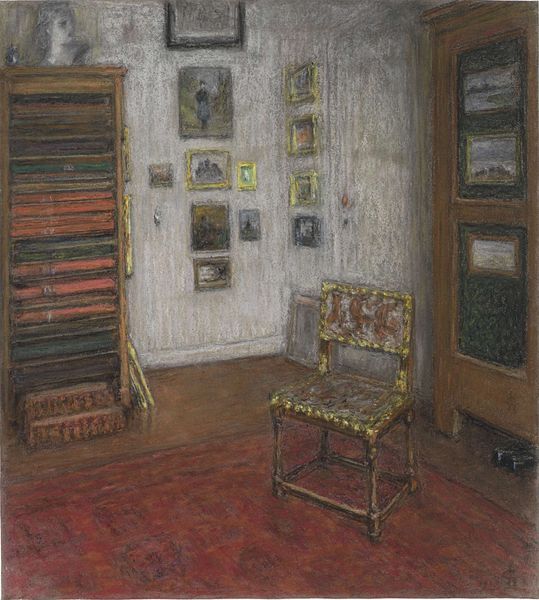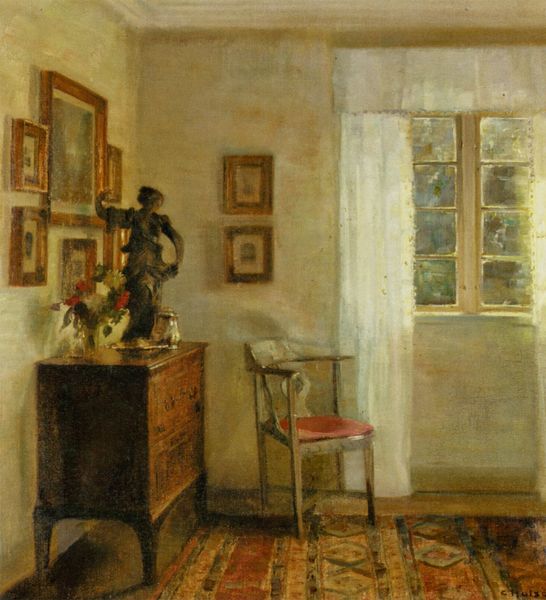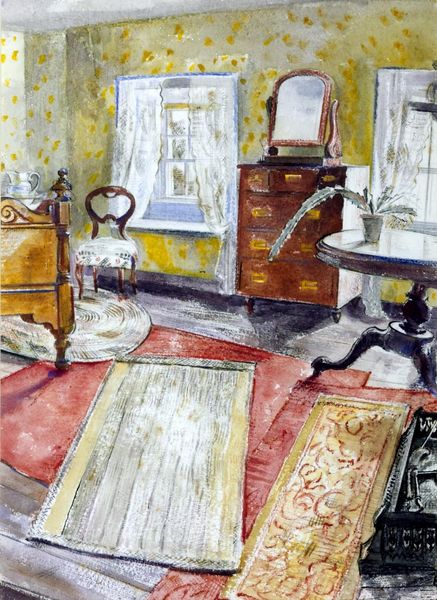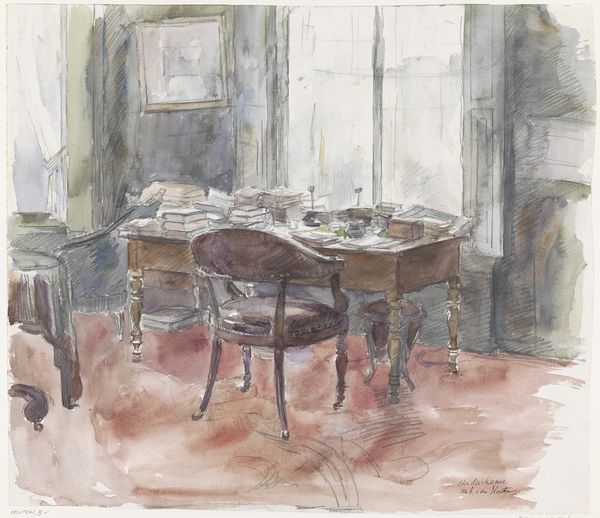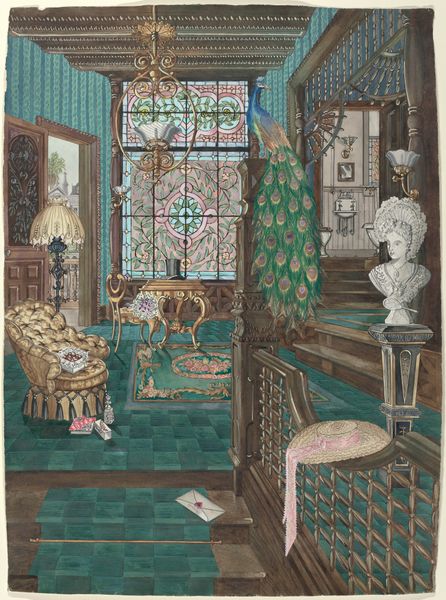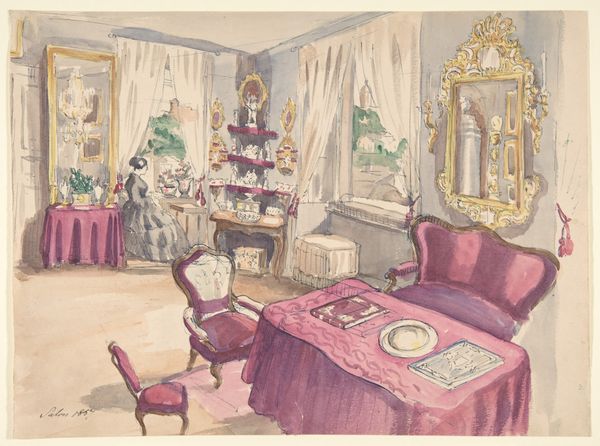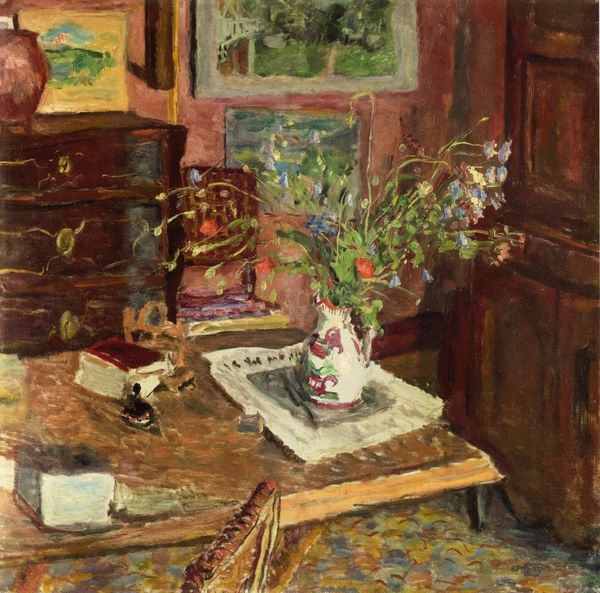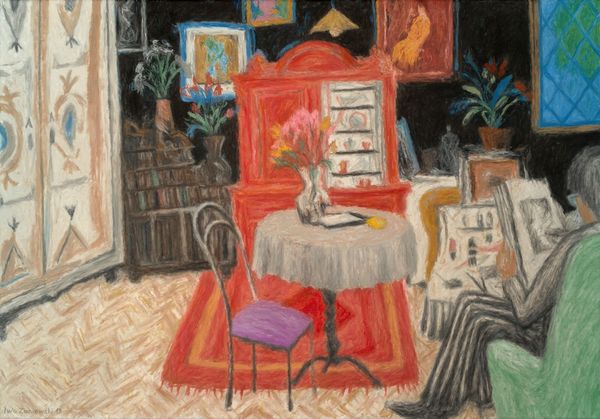
Interieur van een kamer aan de Jan van Nassaustraat 48 1910
0:00
0:00
carelnicolaasstormvansgravesande
Rijksmuseum
Dimensions: height 450 mm, width 290 mm
Copyright: Rijks Museum: Open Domain
Editor: This is Carel Nicolaas Storm van 's-Gravesande's "Interieur van een kamer aan de Jan van Nassaustraat 48", painted in 1910, and held at the Rijksmuseum. It's a watercolor painting depicting an intimate, cluttered interior scene. The soft colors and loose brushstrokes create a sense of gentle nostalgia. How would you interpret this work through its historical context? Curator: Considering the period, we can read this interior as a carefully constructed display of bourgeois identity. The arrangement of furniture, the multitude of framed artworks and photographs on the wall – each element contributes to a sense of established status and cultured taste. What does the intimacy suggest to you about the intended audience for such an image? Editor: It feels like a very private space, so maybe for close friends or family. Perhaps to convey their artistic sensibility and success. Do you think that's intentional, shaping how the space is presented? Curator: Precisely. Think about the proliferation of photography at this time, and how that influenced portraiture and domestic scenes. The seemingly casual arrangement might actually be quite staged, reinforcing particular narratives about the family and its place within society. Consider how Impressionism played into depicting domestic scenes; its inherent connection with “modern” subjectivity might point us to themes of introspection and private experience. Editor: That's fascinating. The connection to photography makes me see the scene differently now, like a curated snapshot for social standing, instead of solely an intimate view. Curator: And doesn’t the choice of watercolor itself – a medium often associated with personal sketches and studies – complicate that notion of a staged display? How do you think the selection of water color is pertinent here? Editor: It suggests a desire to portray informality and closeness to art but the display behind still speaks a different social and cultural reality. The interior decorating of a private sanctuary can be so many contradictory things, it appears. Curator: Exactly! I learned that even the most intimate glimpses are woven with the socio-political threads of the time. Editor: This has truly changed my perspective. I initially saw a personal interior and now I see a dialogue between private and public display!
Comments
No comments
Be the first to comment and join the conversation on the ultimate creative platform.
